Photographs: Reinhard Krause/Reuters Laveesh Bhandari
India is among the world's largest consumers of food and also among the largest growers. What India does has a significant impact on international prices, notes Laveesh Bhandari.
It's good to see that independent thought is still present in the government.
When one part of the government comes out with a serious and objective piece on how the government itself has been responsible for creating food inflation, hopefully the government is more likely to take note.
The Commission for Agricultural Costs and Prices has come out with a discussion paper (the fourth in a series) titled 'Taming Food Inflation in India', penned by its Chairman Ashok Gulati and independent researcher Shweta Saini.
Using econometric analyses, the paper shows how food inflation is an outcome of an increasing fiscal deficit, rising farm wages and transmission of global food inflation.
These three items together account for 98 per cent of the variations in India's food inflation between 1995-96 and December 2012.
. . .
Why India's welfare plans are anti-poor
Image: A child has his breakfast at a flood relief camp in Purniya district town of Bihar.Photographs: Rupak De Chowdhuri/Reuters
In other words, economic growth or population growth are not responsible for inflation.
They, no doubt, provide the environment where external and internal forces created by government action are pushing up prices in an inordinately sustained manner.
Unlike most other pieces of wisdom originating from the government, CACP quite unambiguously points to the fiscal deficit as among the chief culprits.
And, more importantly, mentions a small checklist of critical reforms that can arrest deficit, while maintaining or improving agriculture productivity, and simultaneously giving a boost to overall economic growth.
. . .
Why India's welfare plans are anti-poor
Image: A girl lies on the ground as she cries for food in Akhera village in Haryana.Photographs: Adnan Abidi/Reuters
For all these reasons, CACP's discussion paper deserves greater attention than the various reports we are accustomed to seeing -- or even the Plan document for that matter.
Fertiliser subsidies are among the worst directed subsidies, not only do they reach the beneficiaries in an inadequate manner, the way they are given out simultaneously encourage underuse and overuse of the fertiliser that itself impacts productivity.
This is all well known, but that CACP has also tied in the impact on the Fisc.
The suggestion of directly targeting subsidies based on farm size is good, and one of those ideas whose time has come, especially with rapidly expanding banking networks and beneficiary identification mechanisms.
. . .
Why India's welfare plans are anti-poor
Image: Four-year-old Kiran, who is suffering from malnutrition, stands next to her mother Sheil Rani in Balabehat village in Lalitpur district, in Uttar Pradesh.Photographs: Reinhard Krause/Reuters
Energy subsidies are another item that CACP alludes to.
The argument is that energy subsidies push up the fiscal deficit and, therefore, push up food prices.
This, in turn, impacts poor Indian households quite adversely.
The argument, therefore, that subsidies help the poor is quite flawed -- something that CACP does well to underscore.
But there is another problem with subsidies, such as those for power.
They encourage overdrawing of sub-surface power, inappropriate production patterns are undesirable outcome -- water-rich commodities are grown in low-water access areas, for instance.
Thus, both resource allocation and production patterns are not optimal.
The fact that subsidies adversely impact prices is critically important for policy makers and stakeholders to understand if India has to survive.
. . .
Why India's welfare plans are anti-poor
Image: Four-month-old Vishakha, who weighs 2.3 kg (5 lbs) and suffers from severe malnutrition, is carried at the Nutritional Rehabilitation Centre of Shivpuri district in Madhya Pradesh.Photographs: Adnan Abidi/Reuters
It is well known that India does not need to keep such a high buffer stock of foodgrain.
It is not clear why the government insists on it, and it is refreshing to see CACP also point out this anomaly.
So much buffer stock, of course, impacts the Fisc since it is inefficient expenditure.
Also, it impacts agriculture production patterns adversely.
For, if the government continues to purchase and hold food grains, the incentive to shift to high-value foods, such as proteins and fruits and vegetables, is reduced.
The study then also implicates the Mahatma Gandhi National Rural Employment Guarantee Act as another possible source of inflation.
. . .
Why India's welfare plans are anti-poor
Image: A worker welds iron rods at the Metro railway construction site in Kolkata.Photographs: Parth Sanyal/Reuters
However, the analysis here is a bit weaker and it requires greater rigour.
Notwithstanding these, the point is clear, that the priority needs to be such that a welfare programme not only provides welfare, but also boosts productivity and production.
Given that the first stage of MGNREGA is over and it has matured as a welfare programme, expanding its scope of operations such that production and productivity improve should be rapidly implemented.
International forces are another source of inflation, and many believe that India can do little on that.
Not entirely true.
. . .
Why India's welfare plans are anti-poor
Image: A woman labourer walks past a residential estate under construction in Kolkata.Photographs: Rupak De Chowdhuri/Reuters
India is among the largest consumers of food items and also among the largest growers. What India does has a significant impact on international prices.
CACP may not say it, but it is high time India built a mechanism for both impacting international prices to its advantage and insuring the domestic consumer against fluctuations owing to international influences.
But the larger point of the CACP study needs to be considered.
Few departments of the government are coming out with visionary agendas any more.
It appears as if large parts of the government have given up.
The Planning Commission and the latest documents it has brought out look like tired rehashes of the past.
. . .
Why India's welfare plans are anti-poor
Image: A hungry and homeless child cries in Siliguri.Photographs: Rupak De Chowdhuri/Reuters
The Economic Survey has become just a collection of sentences put together by a command and control economic advisory set-up.
A chapter or two put in by well-meaning individuals are neither here nor there. Statements by policy makers are more about the past than about the future.
India needs to look ahead.
The reforms created high growth that enabled welfare.
But welfare without growth and subsidies without economic efficiency work against the poor.
Food inflation is one such symptom.
Low job creation is another.
. . .
Why India's welfare plans are anti-poor
Image: Children ask for food in the closed Chinchula tea garden estate, about 165 km (103 miles) from Siliguri.Photographs: Rupak De Chowdhuri/Reuters
As India enters a high deficit, low-growth phase, it needs to look ahead -- for the sake of its poor and underprivileged if for no one else.
Looking ahead requires us to clean up where we are going wrong -- a large, sustained and growing fiscal deficit is the first effect of poor economic management.
Sustained inflation is another.
Slowing growth is a third.
A worsening current account deficit is yet another. India is entering a downward spiral and the only way out is to look ahead and incorporate sensible reforms.
The author is Director, Indicus Analytics. These views are personal.

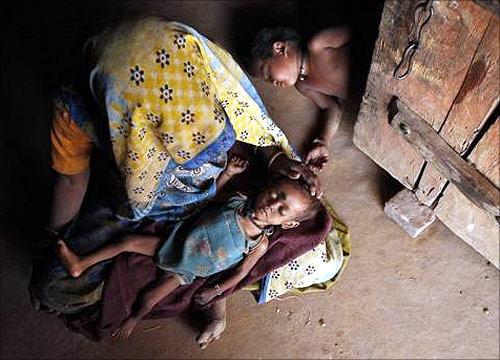

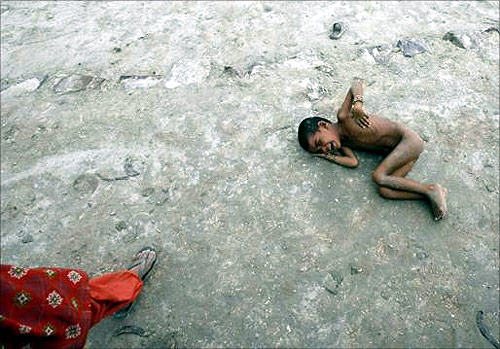


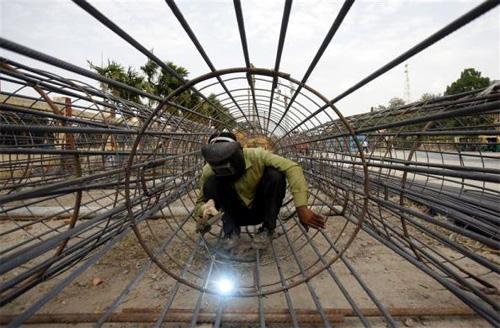
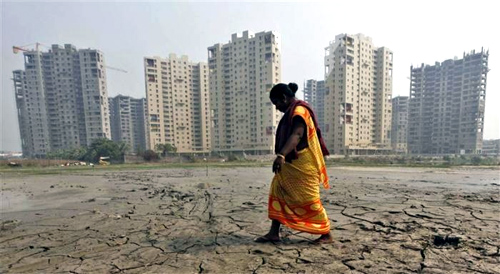

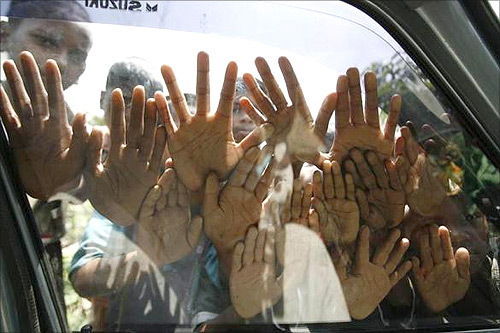

article